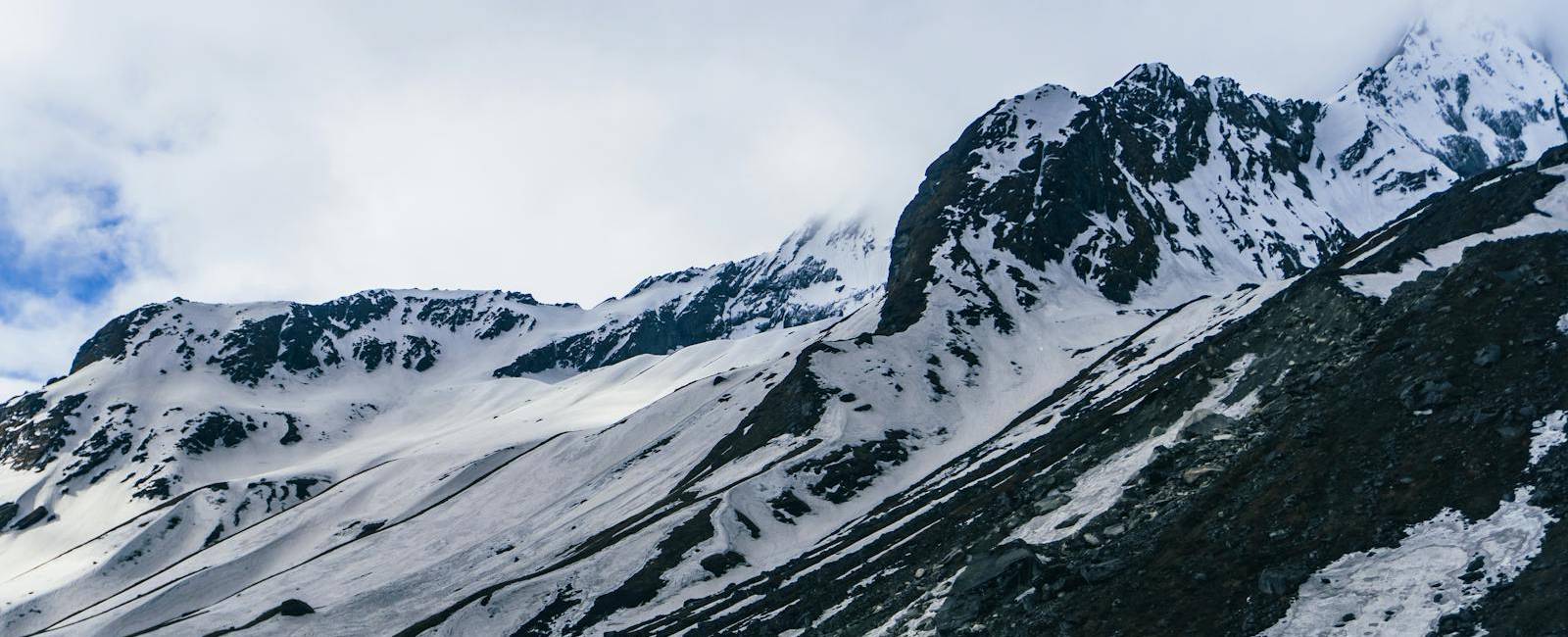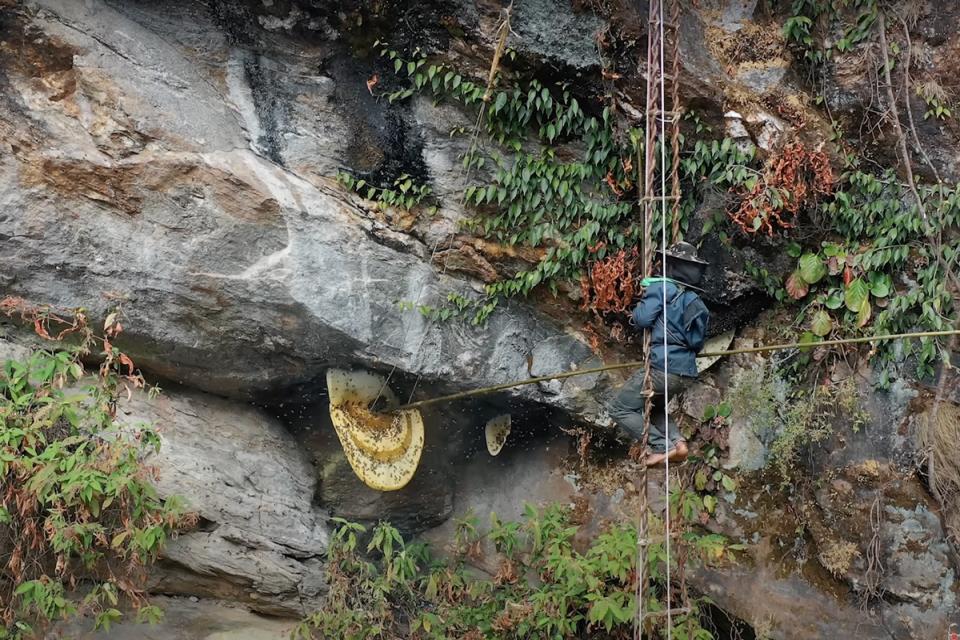Honey hunting in Nepal is more than just an adventure - it’s a cultural journey into a unique Himalayan tradition that combines natural beauty, ancient skills, and thrilling experiences. Whether you're a vlogger capturing raw cultural footage, a tourist seeking offbeat adventures, or a cultural explorer fascinated by indigenous practices, your preparation is crucial to fully enjoy and safely experience this extraordinary activity.
This comprehensive guide will take you through everything you need to prepare for a honey hunting tour in Nepal. From essential gear and fitness tips to cultural insights and safety advice, we’ll help you get ready for an unforgettable expedition. Plus, we’ll show you how to book your authentic honey hunting tour with trusted experts, Best Heritage Tour.
Why Proper Preparation Matters for Honey Hunting in Nepal
Honey hunting, especially the collection of "mad honey" in Nepal’s remote Lamjung and Kaski regions, is a thrilling activity rooted in centuries-old customs. Unlike regular trekking, it involves navigating rugged terrains, steep cliffs, and unpredictable weather while respecting local cultures and ecosystems.
Proper preparation ensures you’re physically and mentally ready for the challenges ahead. It helps you avoid common pitfalls like altitude sickness, injury, or cultural misunderstandings. Being prepared means you can focus fully on the experience - watching expert honey hunters scale cliffs, learning about the spiritual significance of honey, and capturing breathtaking Himalayan landscapes.
Moreover, preparation includes understanding your impact on local communities. Honey hunting areas are home to indigenous groups whose livelihood depends on this practice. Respecting their customs and contributing to the local economy through ethical tourism makes your adventure rewarding on multiple levels.
Essential Packing List for Honey Hunting Tour
Preparing the right gear is crucial for a safe and comfortable honey hunting experience in Nepal. Here’s a breakdown of essential items you should pack, organized by category:
Clothing & Footwear
The weather in the Himalayas can change rapidly, so dressing in layers helps you stay comfortable throughout the day. Proper footwear is vital for navigating rugged and slippery terrain safely.
-
Moisture-wicking base layers (avoid cotton)
-
Insulating mid-layers like fleece or wool
-
Waterproof and windproof outer shell jacket
-
Sturdy, well-broken-in hiking boots with ankle support
-
Warm socks, gloves, and a hat for cold temperatures
Safety Gear
Although tourists do not participate in honey harvesting due to safety concerns, your guided tour will provide basic protective equipment for observation.
-
Helmet for protection against falling debris
-
Harnesses or ropes for secure viewing points
-
Personal first aid kit including altitude sickness medication, painkillers, and bandages
Sleeping Gear
Accommodations during the tour are simple and often chilly, especially at night, so having proper sleeping gear is essential to stay warm and rested.
-
Sleeping bag rated for -10°C (14°F) or lower
-
Sleeping bag liner for added warmth and hygiene
-
Compact pillow or travel blanket (optional)
Water & Snacks
Hydration and energy are key on this physically demanding tour. Always have a way to access clean water and carry nutritious snacks for the trail.
-
Refillable water bottle (1-2 liters)
-
Water purification tablets or portable filter
-
Energy bars, nuts, dried fruits, or trail mix
Electronics & Power
Power sources are limited and often costly in remote areas. Prepare to keep your essential devices charged and ready for capturing moments or navigation.
-
High-capacity power bank
-
Extra batteries or memory cards for cameras
-
Offline maps and emergency apps pre-downloaded on your phone
Personal Hygiene Items
Facilities are basic, so bringing your own hygiene essentials will make your stay more comfortable and clean.
-
Biodegradable wet wipes
-
Hand sanitizer
-
Personal toilet paper and a small trowel (for emergencies)
Health & Fitness Tips Before Your Tour
Honey hunting tours require trekking through mountainous terrain at high altitudes, which can be physically demanding. Proper preparation can help you enjoy the experience and reduce health risks along the way.
Build Your Cardiovascular Endurance
Improving your cardiovascular fitness helps your body handle the sustained effort of trekking over several days.
-
Start exercising 4-6 weeks before your tour
-
Engage in brisk walking, jogging, cycling, or swimming
-
Aim for 30-45 minutes of cardio, 3-5 times per week
Strengthen Your Legs
Strong leg muscles make climbing steep paths and descending easier and safer.
-
Include lunges, squats, and step-ups in your workout routine
-
Practice balance exercises to improve stability on uneven trails
-
Gradually increase the intensity and repetitions
Practice Hiking Conditions
Simulating trail conditions helps prepare your body and mind for the real trek.
-
Walk on uneven surfaces, stairs, or hills
-
Carry a backpack with some weight to mimic trekking load
-
Increase your pace and distance over time to build stamina
Acclimatization & Altitude Awareness
Altitude sickness can affect anyone above 2,500 meters, so understanding prevention is key to a safe tour.
-
Ascend gradually and avoid rapid altitude gain
-
Stay well-hydrated and avoid alcohol before and during the trek
-
Consult your doctor about medication such as acetazolamide (Diamox) if prone to altitude sickness or respiratory issues
Proper fitness and health preparation not only improve your trekking experience but also help you enjoy the incredible honey hunting culture safely and comfortably.
Cultural Etiquette: Respecting Honey Hunting Communities
Honey hunting in Nepal is a deeply rooted cultural tradition, integral to the local Himalayan communities’ way of life. As a visitor, respecting their customs and environment enriches your experience and honors their heritage.
Understand the Tradition
Honey hunting is a sacred practice passed down through generations, not just a tourist activity.
-
Recognize the spiritual and ecological significance of the hunt
-
Appreciate the hunters’ deep knowledge and connection to nature
Ask Before Photographing
Hunters and their rituals are part of living culture; always seek permission before taking photos.
-
Politely ask individuals before snapping pictures
-
Respect any refusals without pressing further
Maintain Respectful Behavior
Loud noises and disruptive actions can disturb both people and wildlife in sensitive areas.
-
Keep voices low near villages and cliffside hunting spots
-
Avoid any behavior that might interfere with the hunters or local life
Support the Local Economy
Purchasing local handicrafts, food, or honey helps sustain the community’s livelihood.
-
Buy souvenirs directly from local artisans
-
Contribute to the community through responsible tourism
Remember the Balance
Honey hunting is a fragile interplay between nature, culture, and survival—not a spectacle for entertainment.
-
Approach the experience with humility and respect
-
Understand the importance of preserving this tradition for future generations
Respecting cultural etiquette ensures a meaningful and responsible honey hunting tour, benefiting both visitors and the local communities.
Safety Measures and Tips for Honey Hunting Tour
Safety is the highest priority during honey hunting tours. Never attempt to climb cliffs or harvest honey yourself - this is strictly done by expert hunters with years of experience and proper equipment.
Follow your guide’s instructions carefully, especially when near cliff edges or bee colonies. Wear protective gear when advised, and maintain a safe distance from the hives to avoid bee attacks.
Carry comprehensive travel insurance that covers high-altitude trekking and adventure activities. Have emergency contact numbers and a first aid kit readily accessible.
Stay hydrated, pace yourself, and notify your guide immediately if you feel symptoms of altitude sickness or exhaustion.
Final Thoughts
Preparing well for your honey hunting tour in Nepal transforms a challenging expedition into an enriching cultural journey. From selecting the right gear and getting fit, to respecting local customs and booking with reliable guides like Best Heritage Tour, every step of preparation deepens your connection to this ancient tradition.
Are you ready to witness one of Nepal’s most fascinating cultural rituals? Contact Best Heritage Tour today and embark on a safe, authentic, and unforgettable honey hunting adventure.
Contact Best Heritage Tour:
Visit: bestheritagetour.com
Phone/Whatsapp: +977-9851149197
Email: info@bestheritagetour.com / bestheritagetour@gmail.com
Office: Thamel Marg, Kathmandu, Nepal
Good preparation and respect for local culture make your honey hunting tour in Nepal safe, enjoyable, and truly memorable.
Author: Best Heritage Tour
Date: 30th July, 2025


